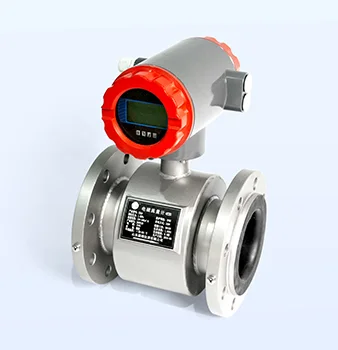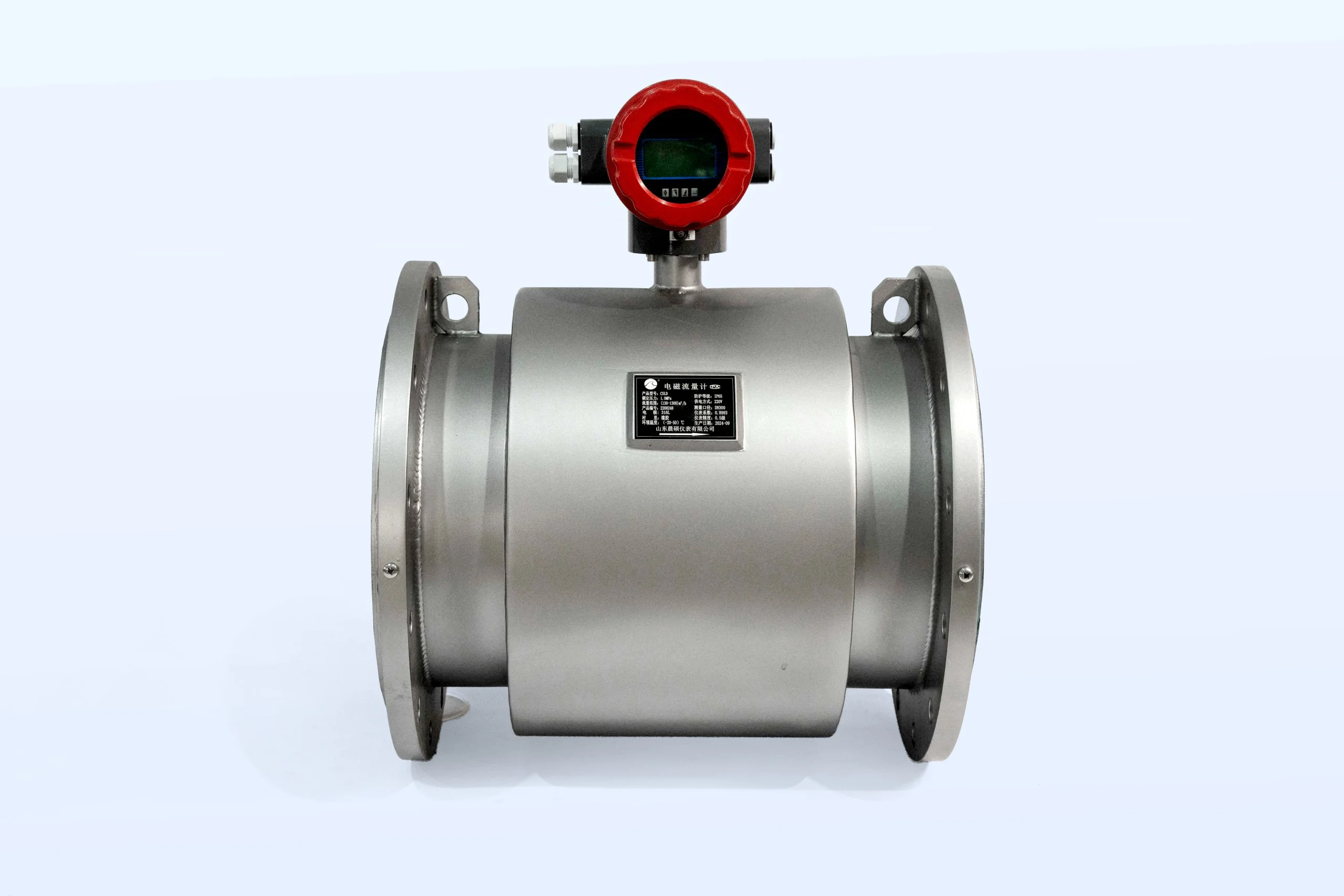ChenshuoCity name (optional, probably does not need a translation)Os metros de fluxo eletromagnético s ão fantásticos para medir fluxo de água, usando um truque de ciência pequeno chamado Lei de Faraday para obter precisão sem nenhum pedaço em movimento. Eles não abraçam, mantêm a pressão de água constante, e lidam com coisas confusas como água esgotada ou água agrícola sem problema. Além disso, eles têm características muito boas e design difícil IP68, tornando-as perfeitas para cidades, fábricas ou campos.

Chenshuo electromagnetic flow meters are super cool devices that work using a science rule called Faraday's law of electromagnetic induction. Basicamente, quando um líquido que conduz eletricidade flui através de um campo magnético, ele cria um pequeno empurramento elétrico (chamado EMF) que corresponde ao rápido que o líquido está se movendo. O contador de fluxo eletromagnético HD-LDE usa este truque para descobrir a velocidade de fluxo e transforma isso em uma velocidade de fluxo verificando mudanças naquele empurramento elétrico.
Para isso funcionar, o líquido tem que ter uma certa condutividade elétrica. O líquido flui através de um campo magnético que está instalado através do tubo. Enquanto se move, ele faz um pequeno sinal elétrico nos eletrodos, e esse sinal corresponde à velocidade de fluxo. Mas o líquido precisa ser suficientemente condutivo - acima de um certo nível - para que isso aconteça. É por isso que metros de fluxo eletromagnético são incríveis para coisas como água ou água residual, onde a condutividade é geralmente boa para ir.
Dentro de um medidor de fluxo eletromagnético, os imãs criam um campo magnético que está em ângulo direito ao fluxo do líquido. Eletrodos, montados perpendiculares ao campo e ao fluxo, captam a tensão que é criada. O sensor transforma a velocidade de fluxo em sinal elétrico, e então um convertidor muda isso em uma saída útil – como um sinal de 4-20 mA – para mostrar o fluxo ou controlar coisas.
Um grande benefício é que os metros de fluxo eletromagnético não têm bits em movimento dentro. O tubo de medição é apenas um tubo liso e reta sem nada bloqueando o fluxo. Isso faz com que seja super difícil agarrar, mesmo com água mucosa cheia de partículas ou fibras. Essa configuração mantém as coisas confiáveis em condições sujas e reduz as reparações.
Esses metros permanecem super precisos, independentemente do que está acontecendo com a temperatura, pressão ou espessura da água. A taxa de fluxo de volume medida pelo medidor de fluxo eletromagnético não é realmente confusa por mudanças em coisas como densidade, adesividade ou condutividade (desde que esteja acima do mínimo). Isso os torna confiáveis para sistemas de água que mudam muito.
Os metros de fluxo eletromagnéticos são loucamente flexíveis. Elas trabalham com tubos de alguns milímetros até 3 metros de largura. Isso é perfeito para grandes tubos, como nos sistemas de água urbanos ou instalações de irrigação agrícola. Se você precisa de um desempenho sólido para grandes empregos, vejam Flowmeter Electromagnético DN300- é construído para trabalho de alto volume com precisão assassina.

Uma vez que não há nada pegando no tubo, esses metros não diminuem o fluxo ou causam quedas de pressão. A única resistência é a mesma que o próprio tubo. Isso é uma grande vitória para configurações de poupança de energia, como bombear água em long a s distâncias.
Os metros de fluxo eletromagnético são campeões em todos os lugares:
Os sistemas de água da cidade precisam de equipamentos que sejam escaláveis e não precisam de tinkering constante. Estes metros fornecem com seu design sem fusos e saída constante, tornando-os perfeitos para redes urbanas de água.
Usaram uma tonelada em tratamento de esgotos, os metros de fluxo eletromagnético manejam fluxos de lodo, cheios de partículas sem ser bloqueados ou esgotados, graças ao seu projeto de tubo aberto.
Os agricultores precisam rastrear o uso da água para economizá-la e manter as culturas felizes. Esses metros dão leituras spot-on e se mantêm em condições externas difíceis.
Desde sistemas de refrigeração a linhas de mistura química, esses metros são usados em indústrias como petróleo, químicos ou aço. Eles dão informações em tempo real para tornar os processos mais suaves e eficientes.
Procurando uma empresa de alta qualidade de medição de água? Chenshuo traz anos de conhecimento e engenharia inteligentes. Eles são uma escolha mais importante para serviços públicos e fábricas industriais.
Seus conversores modernos usam matemáticas inteligentes para manter as leituras constantes, mesmo quando as coisas ficam ruidosas. Eles têm um controle de condutividade para detectar tubos vazios, além de características de autoteste e autodiagnóstico para manter as coisas seguras e correr suavemente. Correições de desvio zero também ajudam com estabilidade a longo prazo, o que é chave para sistemas 24/7 como águas residuais ou ciclos de refrigeração.
Para configurações fortes ou molhadas:
Eles facilitam a recolha de materiais para partes que tocam no líquido, então funciona com coisas corrosivas.
IP68 Protecção para Instalações Submersíveis permite que esses metros manejam estar sob água, como em canais de inundações ou tubos enterrados perto dos rios.
Para continuar com as necessidades tecnológicas de hoje:
O apoio aos Protocolos de Comunicação Digital (Modbus, HART, Profibus) torna simples conectar com sistemas de automatização e fazer controles remotos.
Compatibilidade com a SCADA e as Plataformas IoT significa que você pode monitorar de uma sala de controle ou telefone, captando problemas como vazamentos ou surfluentes rápido.
Escolhar o metro certo significa coincidir com sua configuração:
Estes metros não podem lidar com líquidos com super baixa condutividade, como petróleo ou água super pura. Certifique-se que seu líquido, como água tratada ou crua, tem condutividade suficiente para funcionar.
Você s ó precisa de uma pequena secção de tubo reta -- 5 vezes o diâmetro do tubo. Mas você tem que usar anéis de fundo para evitar ruído de sinais. Além disso, instale-o para evitar bolsos de ar que podem estragar leituras.
Certifique-se de que o medidor cumpre as regras locais. Deveria vir com documentos de calibração da fábrica para prova de estar pronto para ir.
Você precisa de mais do que apenas equipamento -- você precisa de coisas que funcionam sempre:
Quer fazer seu projeto de medição da água maravilhoso? Chenshuo através do formulário de contato de seu site ou envie e-mail ao seu equipe tecnológico. Se escolher tamanhos de tubos ou ligar-se aos sistemas SCADA, eles irão guiá-lo para pegá-lo.
Q: Um medidor de fluxo eletromagnético pode medir líquidos não condutivos?
A: Não. Eles precisam de líquidos com condutividade suficiente, como água, não coisas como petróleo ou água super pura.
Q: Que espaço de instalação preciso para um sensor de fluxo eletromagnético?
A: Apenas um tubo reta curto -- 5 vezes o diâmetro do tubo -- funciona bem.
Q: O uso de um medidor de fluxo eletromagnético causa queda de pressão?
A: Não, não há grande perda de pressão, pois nada bloquea o fluxo. É ótimo para economizar energia.